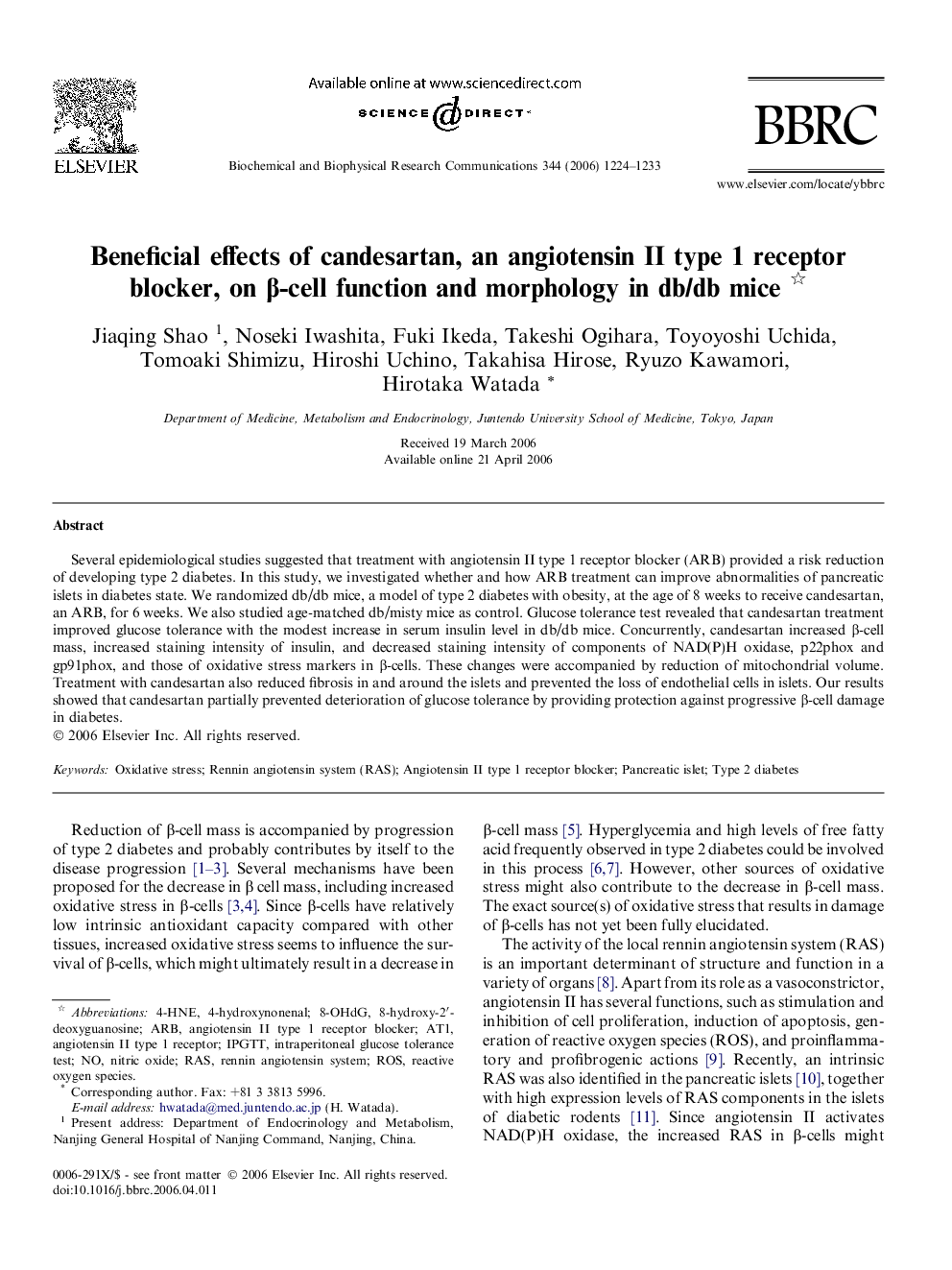| Article ID | Journal | Published Year | Pages | File Type |
|---|---|---|---|---|
| 1940591 | Biochemical and Biophysical Research Communications | 2006 | 10 Pages |
Several epidemiological studies suggested that treatment with angiotensin II type 1 receptor blocker (ARB) provided a risk reduction of developing type 2 diabetes. In this study, we investigated whether and how ARB treatment can improve abnormalities of pancreatic islets in diabetes state. We randomized db/db mice, a model of type 2 diabetes with obesity, at the age of 8 weeks to receive candesartan, an ARB, for 6 weeks. We also studied age-matched db/misty mice as control. Glucose tolerance test revealed that candesartan treatment improved glucose tolerance with the modest increase in serum insulin level in db/db mice. Concurrently, candesartan increased β-cell mass, increased staining intensity of insulin, and decreased staining intensity of components of NAD(P)H oxidase, p22phox and gp91phox, and those of oxidative stress markers in β-cells. These changes were accompanied by reduction of mitochondrial volume. Treatment with candesartan also reduced fibrosis in and around the islets and prevented the loss of endothelial cells in islets. Our results showed that candesartan partially prevented deterioration of glucose tolerance by providing protection against progressive β-cell damage in diabetes.
